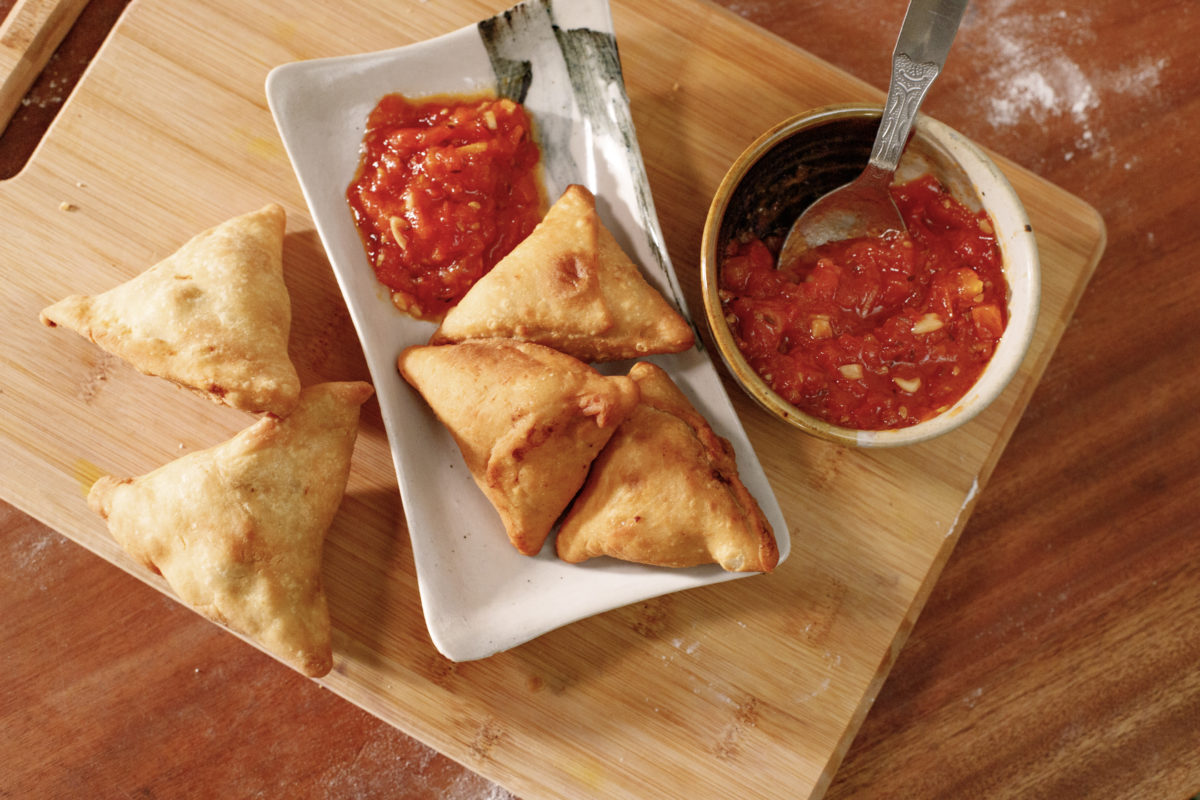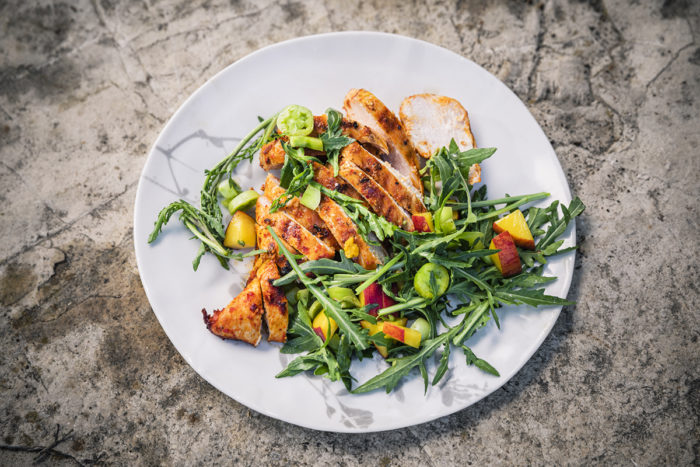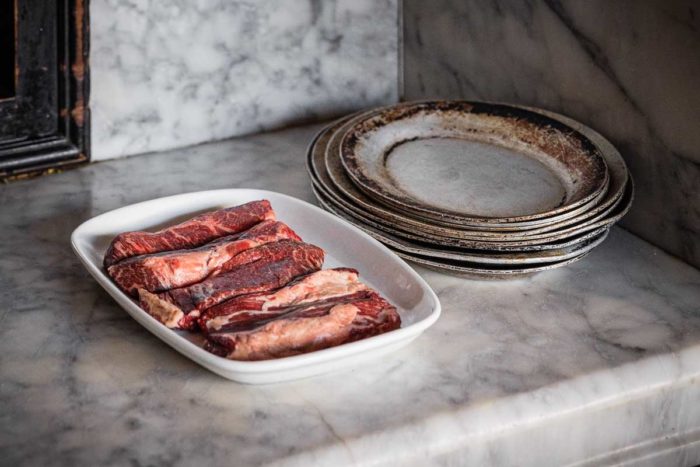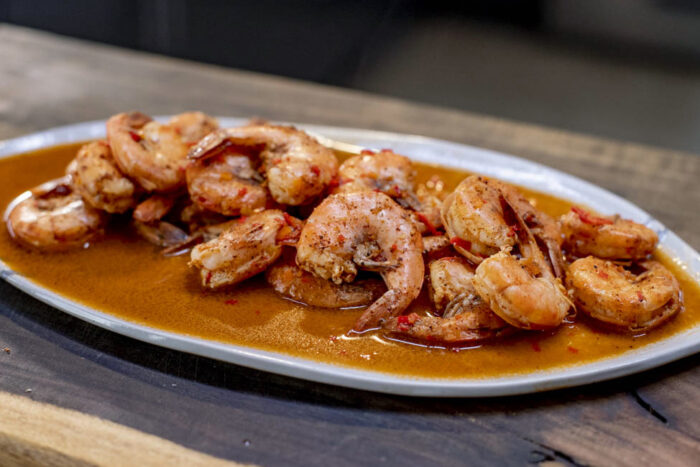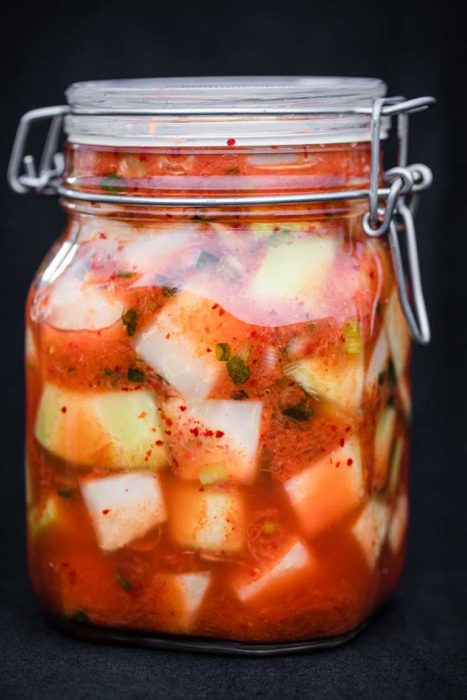
How to Make tomato chutney recipe
Written by the YesChef staff


Get Access to an Ever-Growing Library of Classes
Every Subscription includes:
- Unlimited Streaming of all Classes
- Watch on your phone, tablet or laptop
- Story-driven Classes, Practical Lessons
- Recipes with Step-by-Step Guidance
- 30-day Satisfaction Guarantee
- New Lessons added all the time
$14.99/mo
Billed annually

What Is Tomato Chutney?
A Brief Chutney History
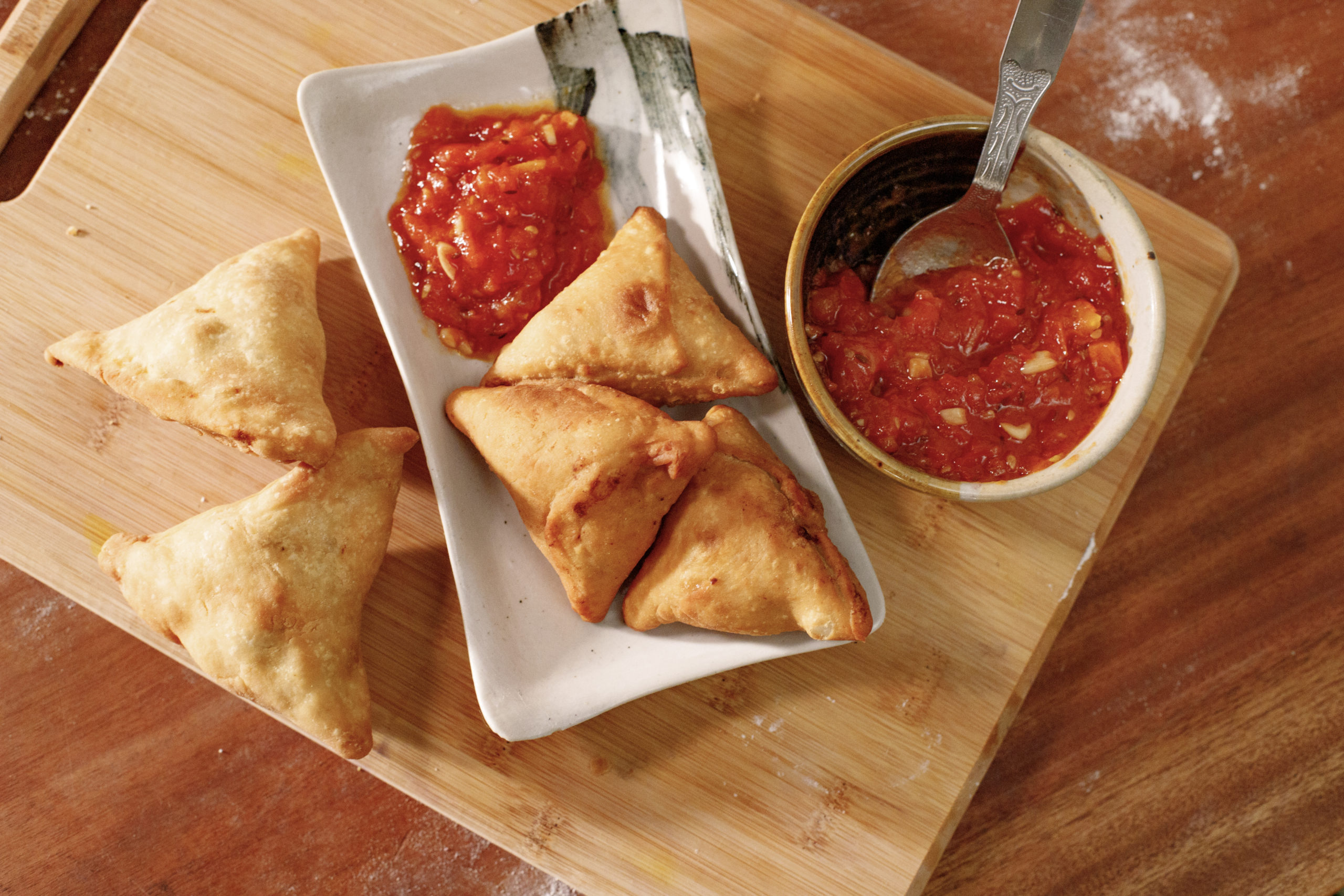
Tomato Chutney Health Benefits
How to Use Tomato Chutney
Tomato chutney can be used in a variety of ways. You can serve tomato chutney at room temperature or you can serve it cold. It can be eaten with samosas or any other kind of chaat, the popular South Indian street food. You can serve it as a dip for flatbreads like parathas. It can be used with different types of dosa – the crisp crepes of Southern India – and with an assortment of Indian pancakes.
Tomato chutney is even an awesome alternative to ketchup if you want something delicious to eat hamburgers or hot dogs with or to dip your French fries into. In Southern India, the food is eaten as a breakfast condiment to complement ponga, which is a rice dish; rava dosa, a crispy crepe made with semolina as well as green chilis, ginger, cumin, and coriander leaves; and pesarattu, a thin, protein-rich crepe made with spices such as ginger and cumin and whole green gram, also known as mung beans.
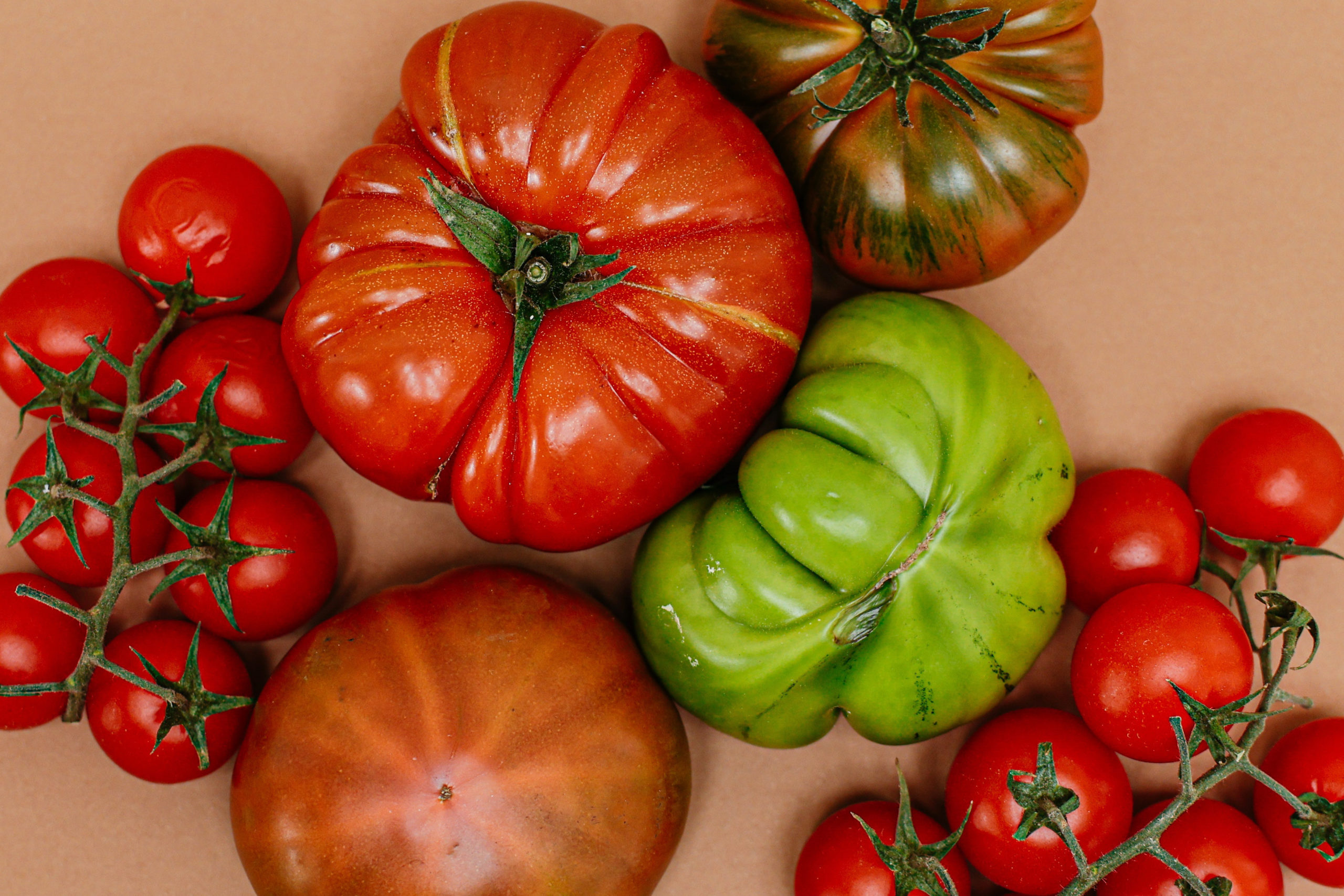
Dosa and Chutney: A Delicious Combination
Types of Chutney
Other kinds of chutney are onion chutney, which features red chilis and toasted lentils along with onions and shallots; coconut chutney, which has fresh coconuts, lentils, chilis, ginger, and curry leaves; and tamarind chutney, which is used as a sweet and tangy dip. You can also cook chutney featuring red garlic or mint. Some chutneys are on the sweeter side while others are packed with intense heat. Red garlic chutney is particularly full of heat and flavor.
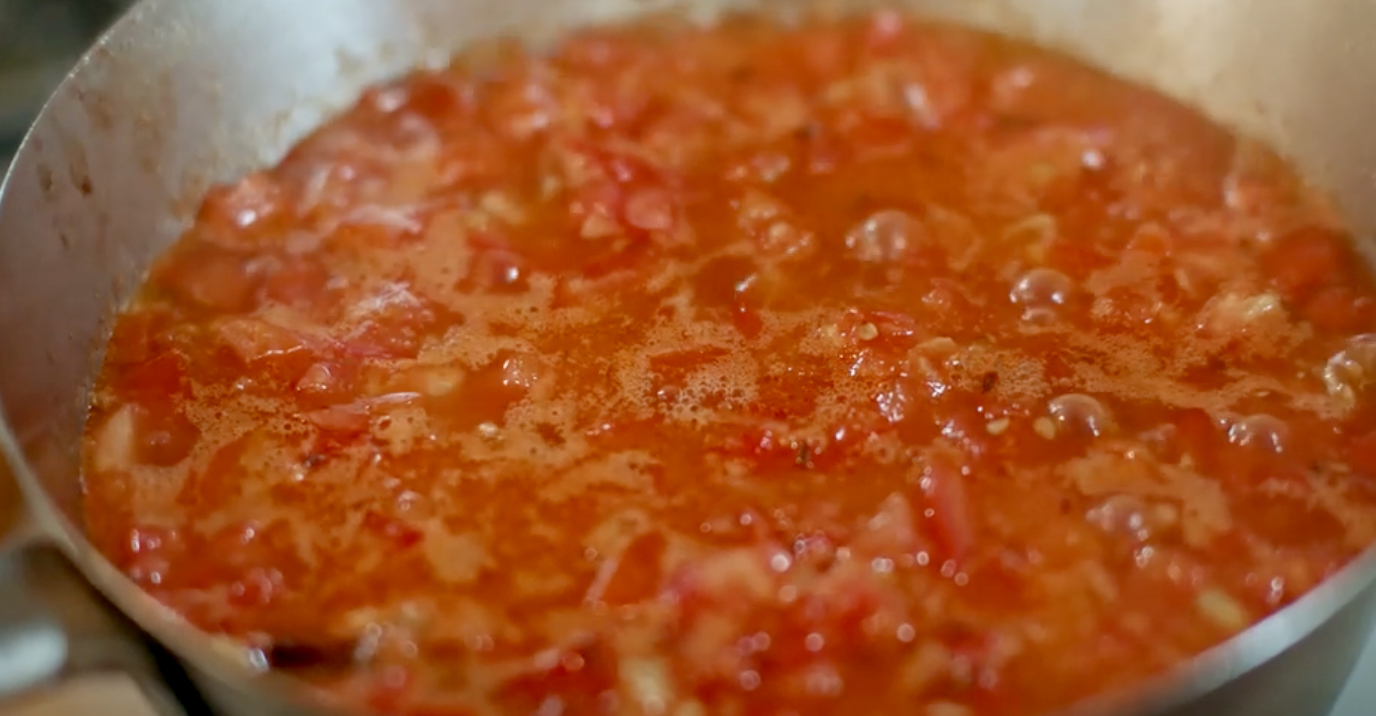
How to Make Tomato Chutney
Asma’s tomato chutney recipe calls for whole cumin seeds, red chilis, ginger, garlic, salt, and sugar as its ingredients. Into a hot pan she pours sunflower oil, after which Asma snaps apart her red chilis to add heat to the dish. (Don’t break apart the chilis if you don’t want your chutney spicy, Asma warns.) Next, ginger and garlic go into the pan, both of which are chopped to avoid creating a paste.
Asma’s recipe calls for you to toss in your tomatoes and add salt (but not too much salt; you can always add more salt later) and a good amount of sugar, which in addition to its important role as a sweetener also acts as a preservative, enabling the tomato chutney to last a few days in a jar. While Asma breaks apart her red chilis to give her chutney a kick, there are other ways to add heat to your plate too, if you prefer. To make a spicy tomato chutney recipe, you can also add green chilis or simply add a higher amount of red chili powder like dried Kashmiri chili or paprika.
Tomato Chutney Recipe Tips
- After tossing all of the ingredients into your pan (which should be set to a flame between medium heat and high heat) watch your pan closely, Asma says, so that your pieces of ginger and garlic color slightly but don’t burn.
- Asma advises against using any kind of flavored oil with which to cook tomato chutney. In her dish she uses sunflower oil, which has a neutral taste.
- On the stove, reduce the boil of your boiling-hot chutney “until it’s silent,” Asma says, with an “occasional sputter coming through.” Depending on how much water is being released with the tomatoes, Asma says, the chutney should cook in approximately 20 or 30 minutes.
- Can other types of fruit work in this tomato chutney recipe? Asma says yes; she advocates using apples – or other fruits including pears and cranberries – in place of tomatoes if you prefer.
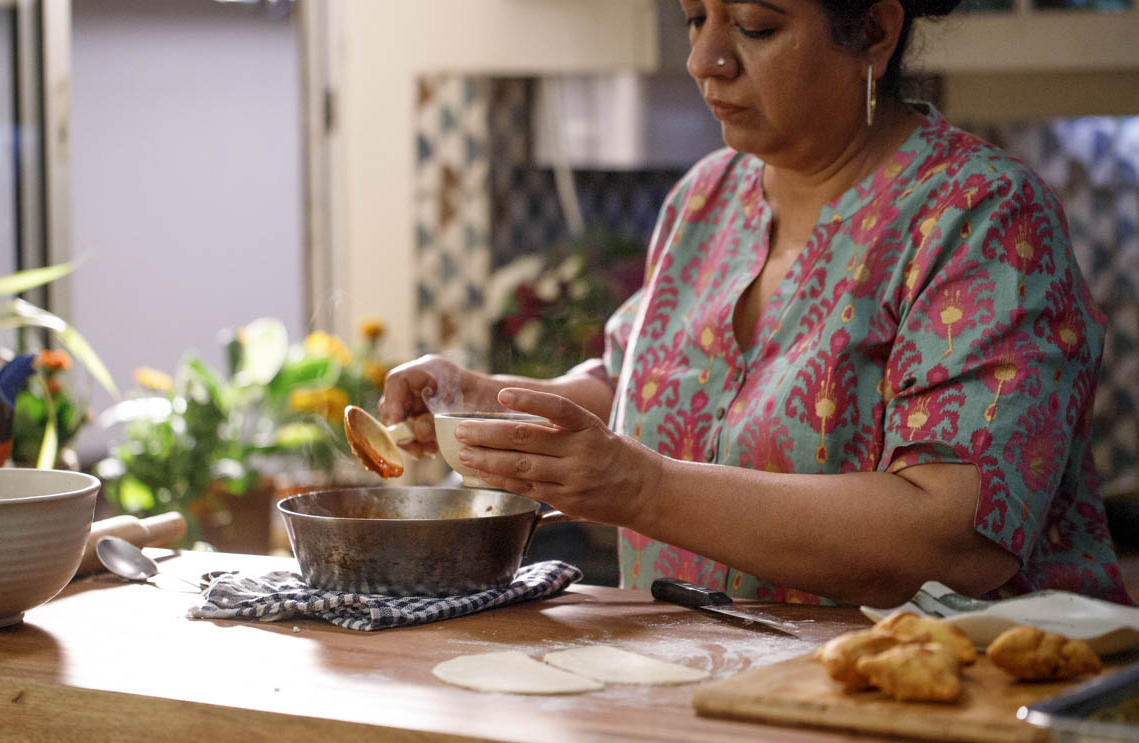
Other Ideas for Tomato Chutney Recipes
According to some recipes, you can add any of the following ingredients to your tomato chutney. These include urad dal, curry leaves, mustard seeds, red wine vinegar, brown sugar, black pepper, onions, tamarind, and garlic.
Urad Dal: Recipes for tomato chutney often recommend that you add a teaspoon or so of urad dal, which is a lentil-like bean commonly used in South Indian dishes. Urad dal is high in protein and fiber and can add a nice nutritional boost to recipes. (Note: While 1 tsp urad dal is the most often recommended amount, other tomato chutney recipes suggest that you add ½ tsp urad dal or 2 tsp urad dal.)
Chana Dal: Split chickpea lentils, or chana dal, can also be incorporated into your chutney. Chana dal can be used in combination with – or instead of – urad dal and can add a nice boost of nutrition to this side dish.
Curry Leaves: To add an herby, citrus-like taste to your tomato chutney, you can incorporate some curry leaves.
Mustard Seeds: For a nice complementary spice, you can add mustard seeds to recipes for tomato chutney. Black mustard seeds should be used if you prefer to add a stronger, spicier flavor while yellow mustard seeds will be better for producing a milder taste. (1 tsp mustard seeds is a common suggested amount)
Red Wine Vinegar: Some recipes suggest that you add red wine vinegar. Its purpose is to enhance the recipe with a complex, acidic flavor.
Brown Sugar: For another slight variation, some recipes for tomato chutney call for you to add brown sugar (and / or honey) instead of white sugar.
Black Pepper: For a sharp and earthy kick to help intensify the flavors of other ingredients in your chutneys, add some black pepper to your recipe.
Onions: Chopped onions are also sometimes added to recipes for tomato chutney. Also, onion tomato chutney, which is made with red chilis and chana dal in addition to tomatoes and onions, is a popular South Indian condiment.
Tamarind: Tamarind, an intense spice, is often added to a tomato chutney recipe as well.
What Type of Tomatoes to Use?
Any fresh ripe tomatoes are ideal for your tomato chutney recipe. But the flavor of the tomatoes you use – whether they’re fresh tomatoes or canned diced tomatoes – may vary based on how ripe the tomatoes are, what season it is, and the individual variety of tomato. For a uniquely fresh and sweet tasting tomato chutney, you can use cherry tomatoes if you are lucky enough to grow your own tomatoes or have access to a local farmers market.
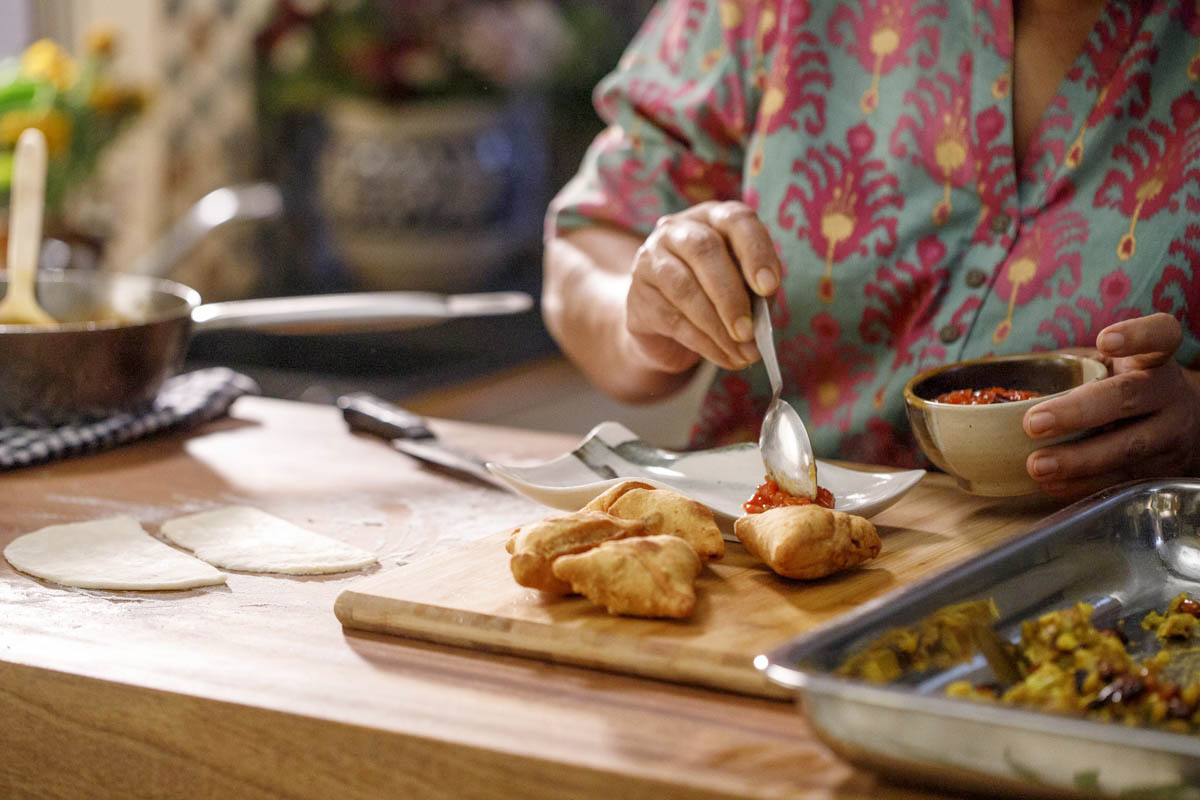
What Type of Oil Should You Cook Chutney With?
Asma uses sunflower oil for its neutral taste. Mustard oil, a strong-flavored oil, is commonly used to make chutney in Bengali cooking. Other oils that can be used to cook chutney include olive oil or peanut oil, although any type of vegetable oil can be employed in the effort.

Tomato Chutney
Ingredients
- 2 tablespoons vegetable oil
- 1/2 teaspoon cumin seeds
Whole
- 4 dried red chili peppers
- 1 inch fresh ginger
Sliced into slivers.
- 6 cloves garlic
Crushed and finely chopped.
- 1 1/2 kilograms fresh tomatoes
Chopped (Substitute with 800 grams of tinned tomatoes).
- 1 teaspoon salt
- 2 tablespoons sugar
- 4 fresh chili peppers
GEAR
- Shallow pan
- Mortar & pestle
- Knife
- Cutting board
Recipe
- Heat the pan on a medium-high flame.
- Add the oil.
- Add the whole cumin seeds.
- Then, break the red chili peppers with your hand and add to the pan.
- Add the ginger and garlic.
- Stir well and make sure the ginger and garlic do not become brown.
- Add the chopped tomatoes and stir.
- Add the sugar and salt and mix.
- Bring the tomatoes to a boil.
- Then lower the heat and cook on a simmer for about 20 to 30 minutes, or until all the liquid has reduced.
- Add the chillies when the mixture has reduced to the point when liquid bubbles are no longer visible.
- Continue to cook the chutney till there is a glaze on top and the liquid of the tomatoes has reduced.
- If this final process is taking longer than 10 minutes.
- Remove the fresh chillies as they will break down and become very spicy.
- Taste and adjust the salt and sugar balance.
- This chutney can stay for a week in the fridge.
- When serving you could garnish with whole green chillies.


